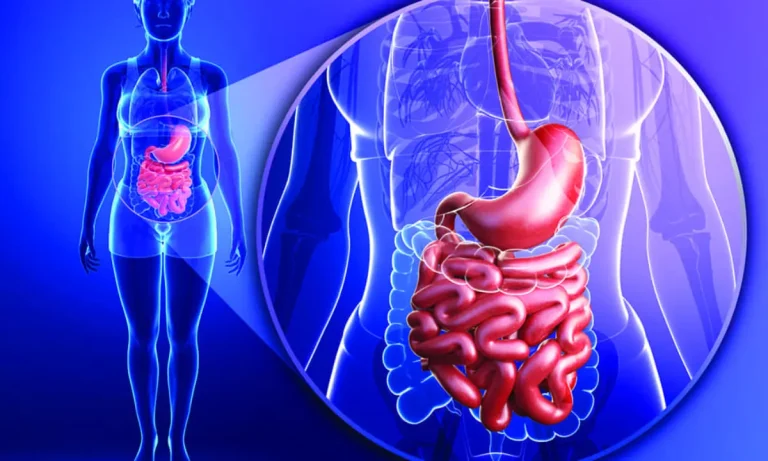As summer unwinds and back‑to‑school season begins, families often feel jolted by shifts in rhythm—earlier mornings, packed schedules, and shorter days. But here’s the incredible truth: this transition is also a powerful biological signal—a chance for a fall reset to recalibrate and restore balance.
That’s why this season is the perfect time to pause, recalibrate, and support your body in small but powerful ways. Instead of waiting for stress, fatigue, or illness to catch up with you, you can take simple, science-backed steps now to feel stronger, clearer, and more resilient. Here are 8 practical tips I share with patients every fall to help them reset and thrive—at school, at work, and at home.
1. Anchor Your Day with Rhythm: Routines Soothe the Brain
Reliable daily routines—like fixed meal times, bedtime rituals, and morning rhythms—don’t just organize your day; they support a fall reset by calming the brain’s stress center (the amygdala) and preserving mental bandwidth for what’s important: creativity, connection, focus.
- Children with consistent routines tend to have steadier moods and better emotional responses.
- Adults who follow a morning sequence—like wake, hydrate, sunlight, movement—often experience smoother days and lower cortisol levels.
Science check: Predictability biologically signals safety, letting your brain shift from survival mode to focus mode.
2. Feed Your Brain First: Nutrition That Powers Focus
Your brain is a demanding organ—though it’s just 2% of your body, it burns about 20% of your energy, mainly from what you eat.
- Choose low-glycemic breakfasts (overnight oats, eggs, berries) to avoid energy crashes.
- Prioritize iron and omega‑3‑rich foods—think leafy greens, legumes, wild fish—for sharper memory, attention, and mood.
- Avoid high-sugar breakfasts—they can suppress your brain’s hippocampus—the memory hub—within hours.
Bonus tip: Fall’s rich produce—root veggies, apples, seasonal greens—offers antioxidants and fiber to support sustained energy and gut wellness.
3. Guard Sleep: It’s Nature’s Ultimate Reset
Sleep isn’t just downtime—it’s your brain’s core cleanup system. During deep sleep, a proper fall reset helps the brain clear toxins, regulate mood, and consolidate memory.
- Morning sunlight resets your circadian rhythm, guiding energy and alertness.
- Avoid screens before bed—just 30 minutes of blue light can delay your melatonin, disrupting sleep onset.
- Consider sunrise-simulating alarm clocks—they ease waking on darker mornings and support mood regulation.
Every cell in your body—skin, gut, brain—runs on a clock. Morning light ties them all together.
4. Build Immunity Proactively—Beyond Handwashing
With the return to classrooms, germs spread fast, but the immune system can be reinforced through layered strategies:
- Vitamin D and zinc are critical for immune cell activation and response.
- Probiotics not only reduce colds—they enhance your immune system’s training, reducing missed school days.
- Fresh-air classrooms or HEPA filtration dramatically improve focus and reduce illness.
Scientific insight: Just 30 minutes in a poorly ventilated room can dull children’s cognitive performance—not just their bodies but their learning suffers.
5. Micro-Movement Keeps the Mind (and Metabolism) Sharp
You don’t need long workouts to benefit—short “movement snacks” throughout the day revitalize both body and brain.
- Stand or stretch every 30 minutes—this activates insulin-sensitivity genes and keeps glucose levels steady.
- Post-meal walks help flatten blood sugar spikes.
- Kids benefit too—even 5 minutes of movement improves focus and classroom performance.
Tip from functional medicine: Use the “2-Minute Rule”—stand or walk every 30 minutes for metabolic and mental health boosts.
6. Nurture Mental Well-being During Transitions
- Exercise raises BDNF, a brain chemical that supports learning and uplifts mood.
- Morning sun boosts serotonin, helping balance mood and prepare for restful sleep later.
- Visual “screen curfews” before bedtime reduce overstimulation, encouraging deeper rest.
A little time in nature—just 20 minutes—can raise mood for up to 12 hours.
7. Plan Smart—Reduce Daily Friction
Simple tools and tiny routines make a big difference:
- Prep meals and lunches on Sunday to reduce midweek scrambling.
- Use shared digital calendars to keep the household on the same page.
- Teach proper backpack posture—ensuring both straps are used and load is distributed—prevents back strain and fatigue.
Research shows: Family dinners at least 3 times a week correlate with improved grades and lower rates of adolescent depression.
8. Flourish with Fall: Align Your Body with the Season
Autumn naturally invites calm, comfort, and grounding—time to tune in rather than resist.
- Fresh, seasonal foods like squash, apples, and root veggies support a more balanced gut and immunity.
- Warm, nutrient-dense meals help regulate energy and digestion.
- Morning outdoor time, even in cooler months, resets your circadian rhythm and supports mood.
Microbiome fact: Your gut bacteria shift with the seasons. Eating seasonal produce nurtures this important relationship.
From My Clinic to Your Home
Every fall, I see patients—families and individuals alike—who feel spacey, drained, and out of step. They come in describing:
- Low energy and fatigue that lingers no matter how much coffee they drink
- Weakened immune balance, with colds, sinus issues, or infections that won’t go away
- Memory lapses and poor concentration that affect school, work, and even daily conversations
- Sleep struggles that leave them unrefreshed in the morning
Most people chalk these symptoms up to “just the season.” But in my clinic, we often discover underlying imbalances driving these patterns, such as:
- Nutritional deficiencies (iron, vitamin D, zinc, omega-3s, B-vitamins) that quietly sap energy and weaken immunity
- Hormonal shifts (like disrupted cortisol rhythms or thyroid imbalances) that leave you feeling exhausted, anxious, or foggy
- Immune dysregulation where the body is inflamed, reactive, or overburdened by stress and environmental triggers
- Circadian rhythm misalignment from lack of morning light and excess screen exposure at night, disrupting sleep and focus
- Lifestyle overwhelm—constant stress, irregular routines, and overstimulation—that leaves your nervous system stuck in overdrive
The good news? With functional and naturopathic medicine, these imbalances can be uncovered and corrected. This isn’t about quick fixes—it’s about giving your body the right inputs and support so it can restore balance naturally.
Ready for Your Personalized Fall Reset?
If fatigue, brain fog, low immunity, or poor sleep are holding you back, it’s time to go deeper than symptom management. Together, we’ll create a plan that restores clarity, focus, energy, and resilience—so you can feel at your best all season long.
Book your Health Discovery Call today and take the first step toward your healthiest fall yet.
References
- Mousavi, S. M., et al. (2023). School start times and sleep in adolescents: A systematic review. Sleep Medicine Reviews.
- Siraji, S., et al. (2023). Light exposure, circadian rhythms, and adolescent mood. Chronobiology International.
- Hoyland, A., et al. (2023). Breakfast glycemic index and cognition: A narrative review. Nutrition Research Reviews.
- Sun, J., et al. (2023). Iron supplementation and cognition in children: A meta-analysis. Nutrients, 15(7), 1234.
- Bloch, M. H., et al. (2023). Omega-3 fatty acids for ADHD: An updated meta-analysis. JAMA Psychiatry, 80(2), 152–161.
- Martineau, A. R., et al. (2024). Vitamin D supplementation to prevent acute respiratory infections: An umbrella review. BMJ, 384, e072621.
- Prasad, A. S. (2025). Zinc in human health: Effect on immune cells. Molecular Medicine, 31(1), 22–32.
- Hao, Q., et al. (2022). Probiotics for preventing acute upper respiratory tract infections. Cochrane Database of Systematic Reviews, (3), CD006895.
- Gao, X., et al. (2023). Classroom CO₂ and cognitive performance in children: A meta-analysis. Indoor Air, 33(2), 198–210.
- Centers for Disease Control and Prevention & Canadian Paediatric Society. (2025). Seasonal influenza vaccine guidance.
- Engeroff, T., et al. (2023). Postprandial walking and glycemic control: A systematic review and meta-analysis. Nutrients, 15(4), 1011.
- Hillman, C. H., et al. (2023). Physical activity and cognitive function in children: A meta-analysis. Neuroscience, 509, 98–110.
- Buffey, A. J., et al. (2022). Breaking up prolonged sitting with light activity lowers glucose and insulin: A systematic review and meta-analysis. PLoS Medicine, 19(9), e1004063.
- Park, S., et al. (2022). Effects of micro-breaks on fatigue and performance: A meta-analysis. PLOS ONE, 17(3), e0265234.
- Negrini, S., et al. (2023). Backpacks and back pain in schoolchildren: A review of evidence and recommendations. European Spine Journal, 32(1), 112–121.
- Wehr, T. A. (1997). Photoperiodism in humans and seasonal affective disorder. Journal of Biological Rhythms, 12(2), 157–164.





